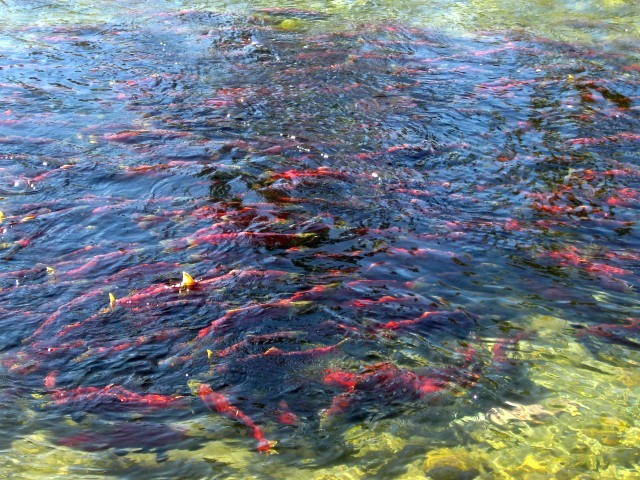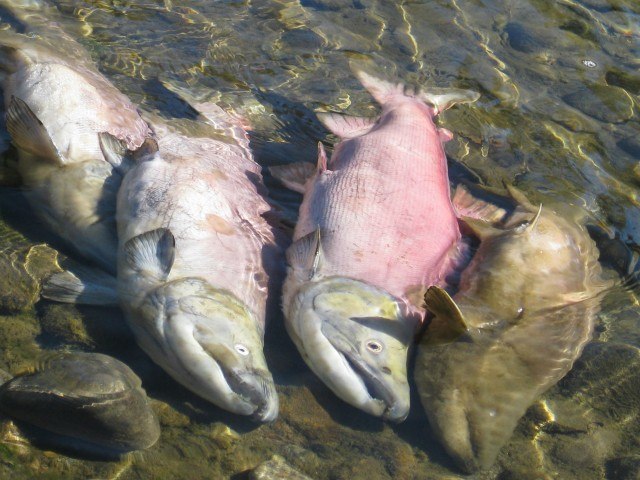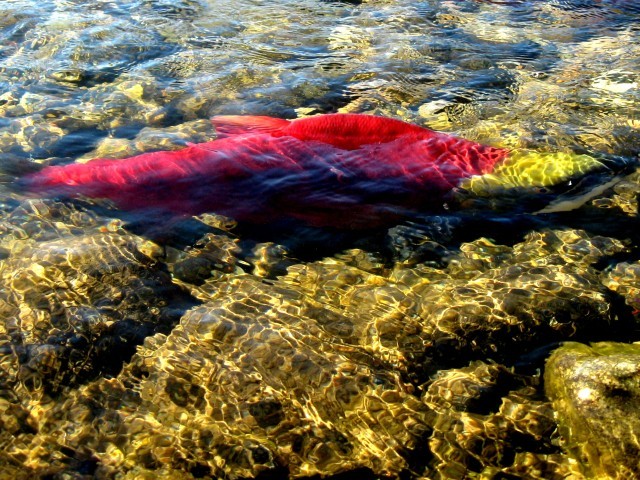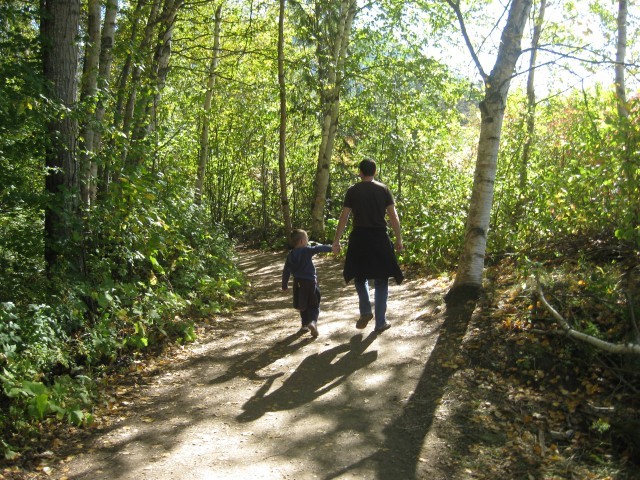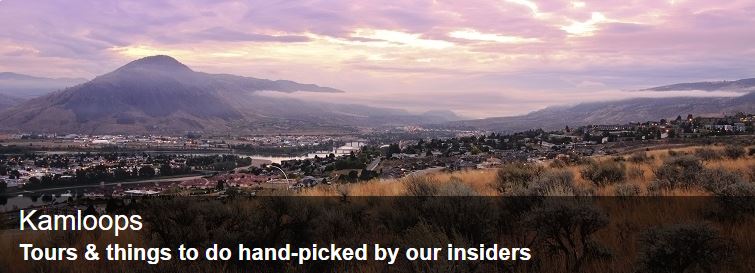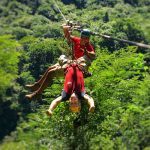Check out our most recent post on the Adams River Salmon Run here!
We were told this Adams River salmon run would be the most amazing salmon run in 100 years, but nothing prepared us for the incredible sight of British Columbia’s Adams River teeming with thousands of crimson red Sockeye salmon thrashing and heaving their way upstream.
Adams River salmon run
Millions of salmon return to their spawning beds in the Adams River each year. Fighting their way from the Pacific ocean, the salmon swim 400 kms (250 miles) upstream, all to lay their eggs and die in the river they hatched from four years before.
After all this, only one of 4,000 eggs lives to be an adult. Those that survive make their way to the Pacific, where they live until they repeat the cycle and return to the river four years later. It’s not fully understood how the salmon navigate back to their river of birth.
These photos and videos are from the salmon run in 2010, which saw over 100 million salmon. This was the single largest salmon run of this century, dwarfing the second largest in 1913.
Every four years, the salmon migration dwarfs all others, and is called a dominant salmon run. Even on off years, over two million salmon return from the Pacific Ocean. For years, salmon numbers were in decline, so seeing this large a salmon run was great sign that BC’s salmon population was on the rebound. Chinook, pink, and Coho salmon also spawn in the Adams River.
Where: Roderick Haig-Brown Provincial Park, British Columbia, Canada.The park has viewing platforms where you can see the salmon as they’re squeezed through a narrow channel, walking paths, and educational and interactive booths. It’s an easy, flat hike along the riverbank, making it great for families, though you do have to watch out for little ones wandering into the river.
When to Go: You can catch the salmon run during the first three weeks of October each year with the numbers typically peaking around Canadian Thanksgiving weekend (mid-October). Though you can see salmon spawning in any year, they come in the largest numbers every four years during dominant years (2014 and 2018). Sub-dominant runs in 2015 and 2019 should also see large numbers.
What Else To Do: Roderick Haig-Brown Provincial Park is smack dab in the middle of some of the most beautiful lake country in British Columbia. You can rent a houseboat in the Shuswaps, or tour the great wineries around Kelowna (with a lot of fun things to do in Kelowna). If you’re staying in Kamloops with kids, the BC Wildlife Park is worth a visit. Chase is also now home to Treetop Flyers for those craving zipline adventures.
Where to Stay Near Roderick Haig-Brown Provincial Park
Camping – Roderick Haig-Brown Provincial Park doesn’t have any camping facilities, but Niskonlith Lake Provincial Park and Shuswap Lake Provincial Park are within a 20 minute drive. Note that in mid October it can get quite cool at night and even some days so pack accordingly.
Hotels – If you’re planning a hotel stay, the closest hotel is Quaaout Lodge, about 6 km from the park. If you’re in town longer and want to explore other areas you can stay in nearby Kamloops, Salmon Arm or Chase.
Hostel – There’s an International Youth Hostel about 4 kms from the park in Squilax. It’s called HI – Shuswap Lake – Squilax General Store & Hostel.
How to Get There: The best way to visit is by car. The nearest cities are Kamloops (50 minutes), Salmon Arm (40 minutes ), or the small town of Chase (10 minutes). Kelowna is a 1 1/2 hour drive. Vancouver is about five hours by car and Calgary is 7 hours by car through the beautiful Rocky Mountains. The nearest airport to Roderick Haig-Brown Provincial Park is in Kamloops.
More Information: Roderick Haig-Brown Provincial Park, Adams River Salmon Society
If you’re in the area, and you’re looking for something else to do, Viator offers several tours in the Kamloops area, including horseback riding, whitewater kayaking, ziplines and ATV tours. You can find them all on Viator here.


